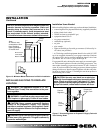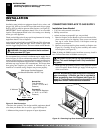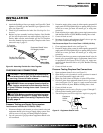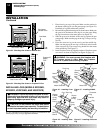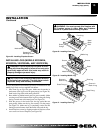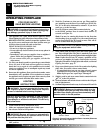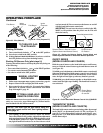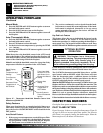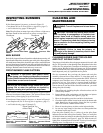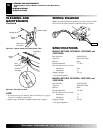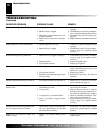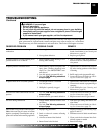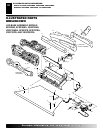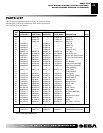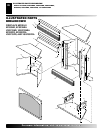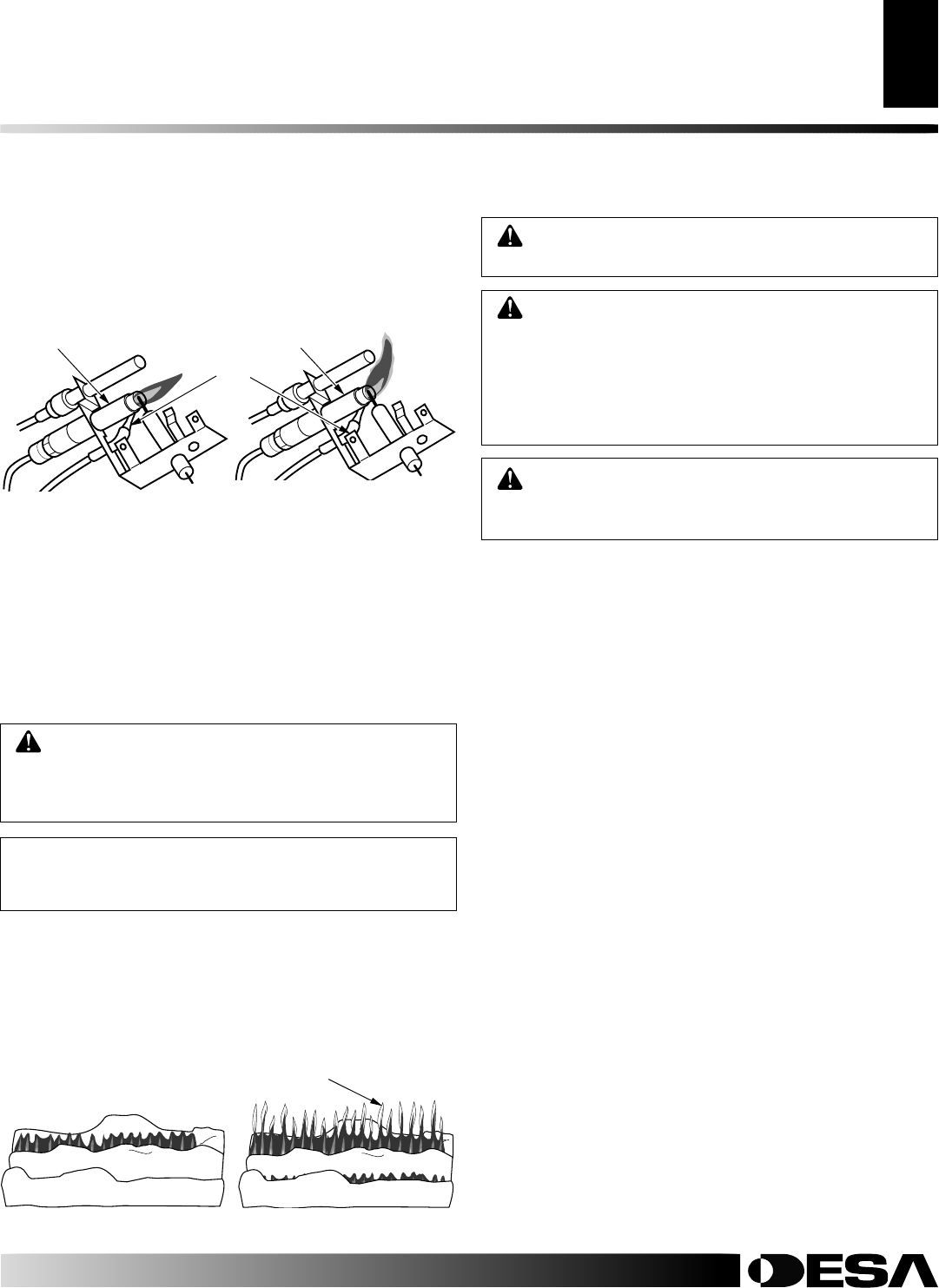
107172-01J
19
19
For more information, visit www.desatech.com
For more information, visit www.desatech.com
Figure 38 - Correct Pilot Flame
Pattern
Pilot Burner
Figure 39 - Incorrect Pilot
Flame Pattern
Pilot Burner
Thermocouple
MAIN BURNER
Periodically inspect all burner flame holes with the heater running. All
slotted burner flame holes should be open with yellow flame present.
All round burner flame holes should be open with a small blue flame
present. Some burner flame holes may become blocked by debris or
rust, with no flame present. If so, turn off heater and let cool. Remove
blockage. Blocked burner flame holes may create soot.
FRONT BURNER FLAME PATTERN
WARNING: If front burner flame pattern shows
yellow tipping, your fireplace could produce increased
levels of carbon monoxide. Follow instructions below.
Yellow flame on rear burner is normal.
NOTICE: Do not mistake orange flames with yellow
tipping. Dirt or other fine particles are burned by
fireplace, causing brief patches of orange flame.
Figure 40 shows correct front burner flame pattern. Figure 41 shows
incorrect front burner flame pattern. The incorrect burner flame
pattern shows yellow tipping at top of blue flame.
If front burner flame pattern is incorrect, as shown in Figure 41
• turn fireplace off (see To Turn Off Gas to Appliance, page 17)
• see Troubleshooting, pages 21 through 23
CLEANING AND
MAINTENANCE
WARNING: Turn off fireplace and let cool before
cleaning.
CAUTION: You must keep control areas, burner,
and circulating air passageways of fireplace clean.
Inspect these areas of fireplace before each use.
Have fireplace inspected yearly by a qualified service
person. Fireplace may need more frequent cleaning
due to excessive lint from carpeting, bedding mate-
rial, pet hair, etc.
CLEANING BURNER INJECTOR HOLDER
AND PILOT AIR INLET HOLE
The primary air inlet holes allow the proper amount of air to mix with
the gas. This provides a clean burning flame. Keep these holes clear
of dust, dirt, lint, and pet hair. Clean these air inlet holes prior to each
heating season. Blocked air holes will create soot. We recommend
that you clean the unit every three months during operation and have
heater inspected yearly by a qualified service person.
We also recommend that you keep the burner tube and pilot
assembly clean and free of dust and dirt. To clean these parts we
recommend using compressed air no greater than 30 PSI. Your local
computer store, hardware store, or home center may carry com-
pressed air in a can. You can use a vacuum cleaner in the blow
position. If using compressed air in a can, please follow the direc-
tions on the can. If you don't follow directions on the can, you could
damage the pilot assembly.
1. Shut off the unit, including the pilot. Allow the unit to cool for
at least thirty minutes.
2. Inspect burner, pilot, and primary air inlet holes on injector
holder for dust and dirt (see Figure 42, page 20).
3. Blow air through the ports/slots and holes in the burner.
4. Check the injector holder located at the end of the burner tube
again. Remove any large particles of dust, dirt, lint, or pet hair
with a soft cloth or vacuum cleaner nozzle.
5. Blow air into the primary air holes on the injector holder.
6. In case any large clumps of dust have now been pushed into
the burner repeat steps 3 and 4.
Clean the pilot assembly also. A yellow tip on the pilot flame
indicates dust and dirt in the pilot assembly. There is a small pilot
air inlet hole about two inches from where the pilot flame comes out
of the pilot assembly (see Figure 43, page 20). With the unit off,
lightly blow air through the air inlet hole. You may blow through a
drinking straw if compressed air is not available.
INSPECTING BURNERS
Pilot Flame Pattern (Cont.)
Main Burner
Front Burner Flame Pattern
CLEANING AND MAINTENANCE
Cleaning Burner Injector Holder and Pilot Air Inlet Hole
Figure 40 - Correct Burner
Flame Pattern
Figure 41 - Incorrect Burner
Flame Pattern
Yellow Tipping At Top
of Blue Flame
INSPECTING BURNERS
Continued
If pilot flame pattern is incorrect, as shown in Figure 39
• turn heater off (see To Turn Off Gas to Appliance, page 17)
• see Troubleshooting, pages 21 through 23
Note:
The pilot flame on natural gas units will have a slight curve,
but flame should be blue and have no yellow or orange color.
WARNING: Failure to keep the primary air
opening(s) of the burner(s) clean may result in soot-
ing and property damage.



